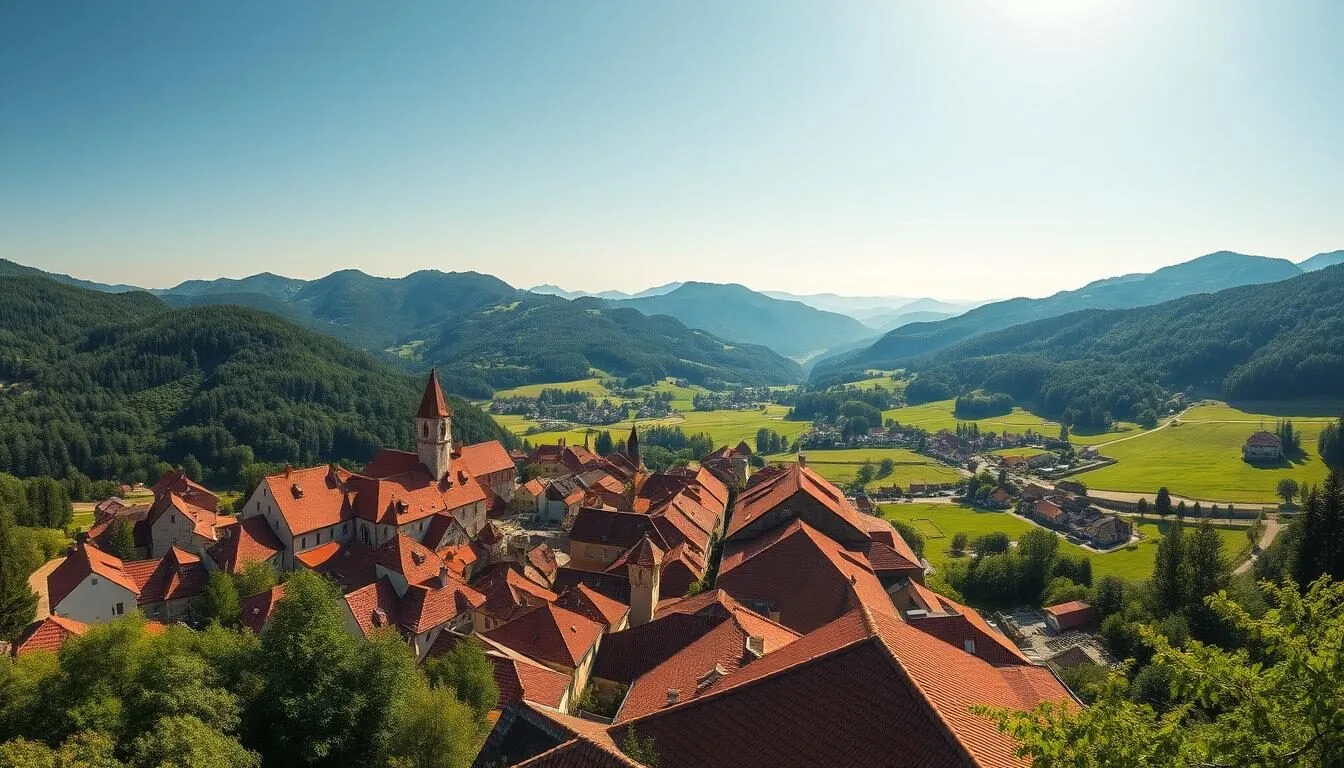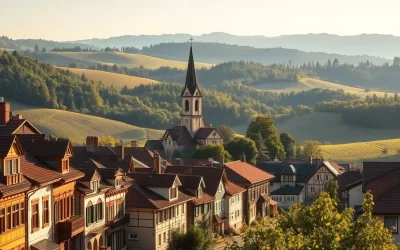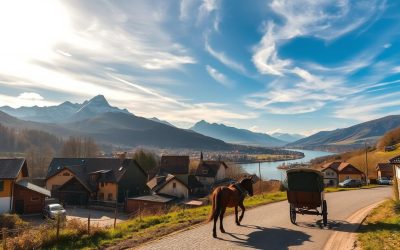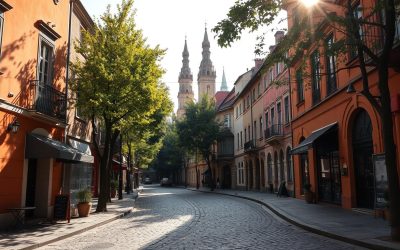Did you know Romania is home to the world’s best-preserved medieval towns and Europe’s largest population of brown bears? This captivating Eastern European country boasts over 150 castles, the second-largest building in the world (the Palace of Parliament), and the stunning Transfăgărășan highway, once dubbed “the best road in the world” by Top Gear. Romania offers a fascinating blend of medieval charm, natural wonders, and vibrant culture that remains surprisingly off the mainstream tourist radar.
Planning Your Romanian Adventure
Romania offers an incredible diversity of experiences, from exploring medieval castles in Transylvania to relaxing on Black Sea beaches and hiking through pristine Carpathian mountain trails. This comprehensive guide will help you discover the best things to do in Romania, with insider tips to make your journey unforgettable.
Ready to Explore Romania?
Start planning your Romanian adventure today with these essential travel resources:
When to Visit Romania
Romania experiences four distinct seasons, each offering unique experiences:
Spring (April-May)
Spring brings mild temperatures and blooming landscapes. This shoulder season offers fewer crowds and lower prices, making it ideal for exploring cities and countryside alike. The Carpathian mountains come alive with wildflowers, creating perfect hiking conditions.
Summer (June-August)
Summer is peak tourist season with warm temperatures (25-30°C/77-86°F) and the most festivals. This is the best time for beach vacations on the Black Sea coast and exploring the Danube Delta. Mountain regions offer relief from summer heat with temperatures 5-10°C cooler than lowlands.
Fall (September-October)
Fall brings spectacular foliage to the Carpathian mountains and wine harvest festivals in rural regions. Temperatures remain pleasant (15-20°C/59-68°F) with fewer tourists, making it perfect for photography and cultural exploration.
Winter (November-March)
Winter transforms Romania into a snowy wonderland, especially in the Carpathians. Ski resorts like Poiana Brașov and Sinaia offer excellent winter sports opportunities. Christmas markets in Sibiu, Brașov, and Bucharest are magical, though some rural attractions may have limited hours.
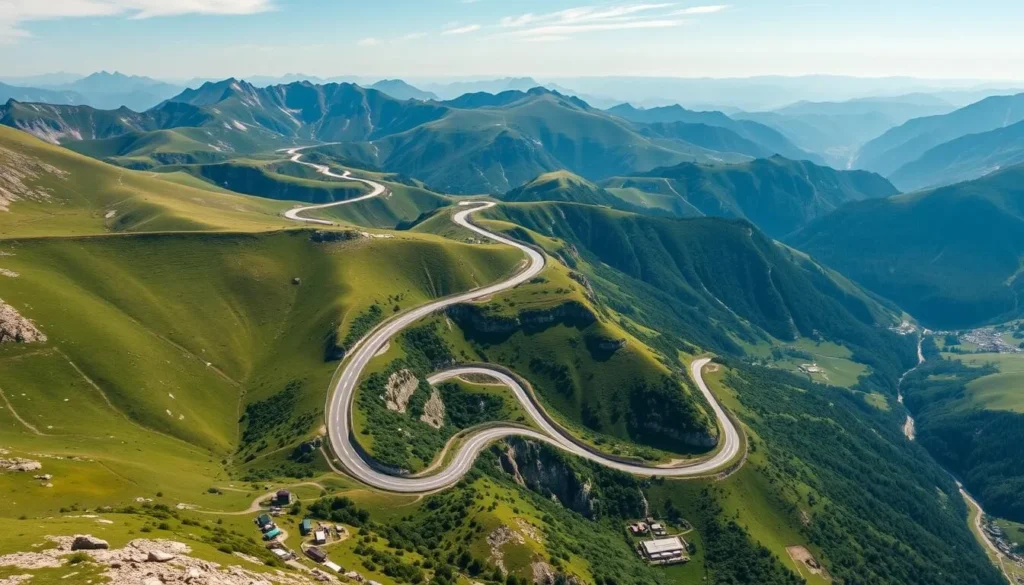
Getting to Romania
By Air
Romania has several international airports, with Henri Coandă International Airport (OTP) in Bucharest being the largest. Other international airports include Cluj-Napoca (CLJ), Timișoara (TSR), and Iași (IAS). Direct flights connect Romania to major European cities, with connecting flights available from North America and Asia.
By Train
Romania is well-connected to the European rail network, with international trains from Budapest, Vienna, and other neighboring countries. The journey offers scenic views but can be lengthy. Check schedules on the Romanian Railways (CFR) website for the most up-to-date information.
By Car
Driving to Romania from neighboring countries is straightforward via major highways. Border crossings are generally efficient for EU citizens. Romania’s road infrastructure has improved significantly in recent years, though rural roads may still present challenges.
Find the Best Flight Deals to Romania
Compare prices and book your flights to experience Romania’s wonders:
Getting Around Romania
Exploring Romania’s diverse landscapes and attractions requires some planning. Here are the best transportation options:
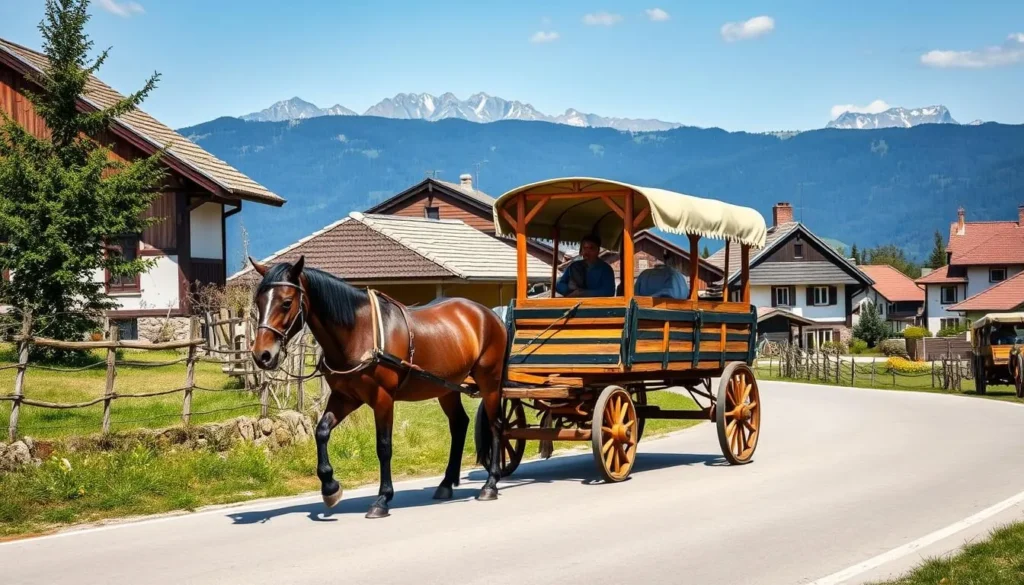
Rental Car
Renting a car offers the most flexibility for exploring Romania’s countryside, remote villages, and scenic drives like the Transfăgărășan Highway. Major international rental companies operate at airports and in larger cities. A valid driver’s license from your home country is typically sufficient.
Trains
Romania’s extensive rail network connects major cities and many smaller towns. While not the fastest option, trains offer an affordable and scenic way to travel. First-class tickets provide more comfort for longer journeys. Purchase tickets in advance for popular routes, especially during summer months.
Buses and Minibuses
Buses and minibuses (maxitaxi) fill gaps in the train network and often provide faster connections between cities and to rural areas. Multiple companies operate throughout the country, with tickets available at bus stations or sometimes directly from drivers.
Top Attractions in Romania
Romania offers an incredible variety of attractions, from medieval castles to pristine natural wonders. Here are the must-visit highlights:
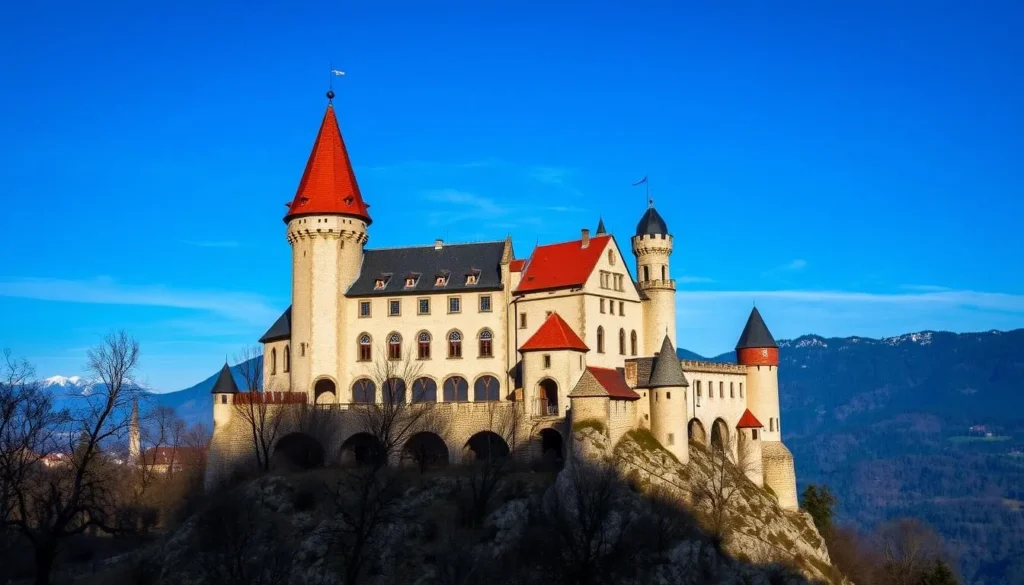
1. Bran Castle
Often marketed as “Dracula’s Castle,” this imposing medieval fortress near Brașov is Romania’s most famous attraction. While the connection to Vlad the Impaler (the inspiration for Bram Stoker’s Dracula) is tenuous, the castle itself is a fascinating historical monument dating back to the 13th century. Explore its narrow winding staircases, secret passages, and period furniture collections. The castle offers spectacular views of the surrounding Carpathian landscape.
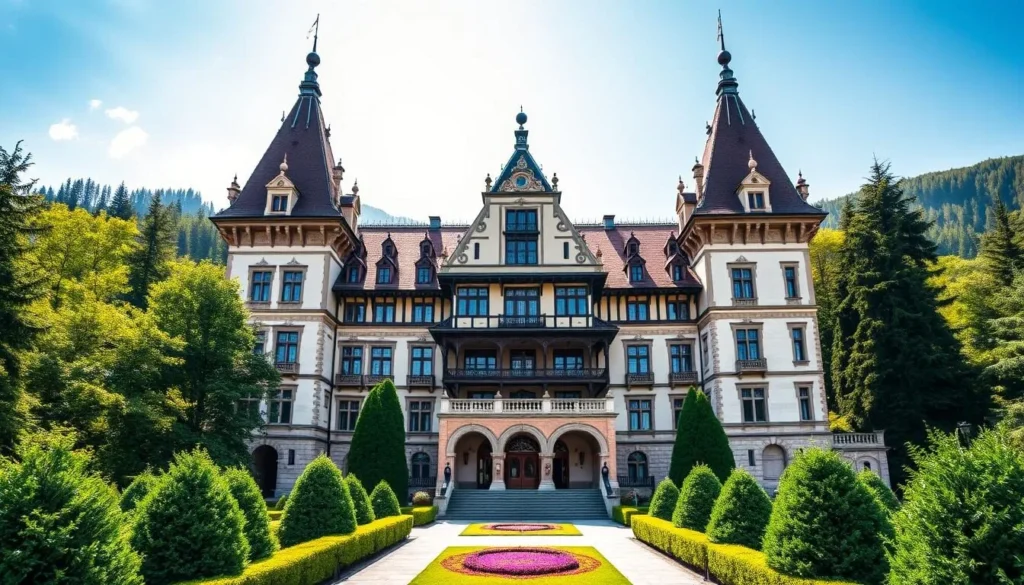
2. Peleș Castle
Located in the mountain resort of Sinaia, Peleș Castle is widely considered one of the most beautiful castles in Europe. This former summer residence of the Romanian royal family features 160 rooms decorated in elaborate German Renaissance style. The castle boasts one of Europe’s finest art collections, including armor, weapons, stained glass, ivory, fine furniture, rugs, and priceless paintings. The surrounding Carpathian mountain scenery adds to its fairy-tale appeal.
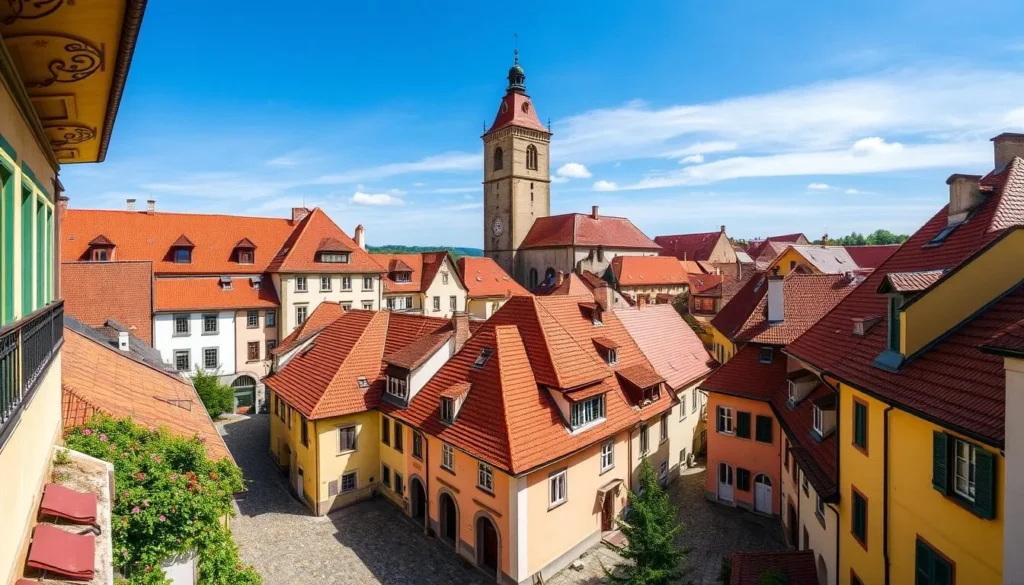
3. Sighișoara
This perfectly preserved medieval town in Transylvania is a UNESCO World Heritage site and one of the best places to visit in Romania. Wander through its cobblestone streets lined with colorful 16th-century burgher houses, climb the iconic Clock Tower for panoramic views, and visit the house where Vlad the Impaler was born. Sighișoara feels like stepping into a fairy tale, especially during the annual Medieval Festival held each July.
Experience Romania’s Historic Wonders
Book guided tours to Romania’s most iconic castles and medieval towns:
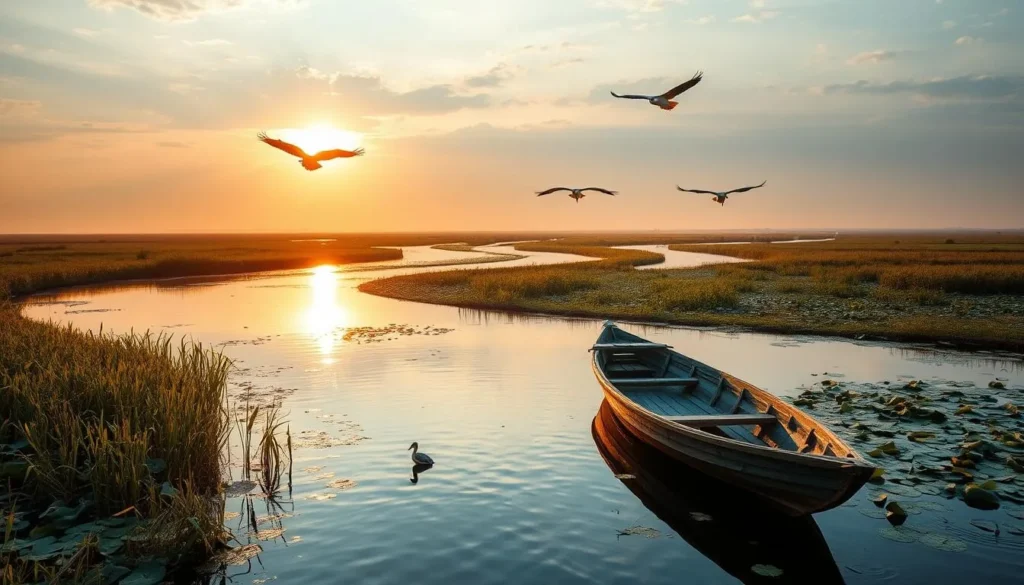
4. Danube Delta
The Danube Delta is a UNESCO Biosphere Reserve and one of Europe’s largest wetlands. This natural paradise is home to over 300 species of birds and numerous fish species. Take a boat tour through the maze of channels, lakes, and reed islands to spot wildlife in this pristine ecosystem. The delta offers excellent opportunities for birdwatching, fishing, and photography. The villages within the delta maintain traditional lifestyles centered around fishing and reed harvesting.
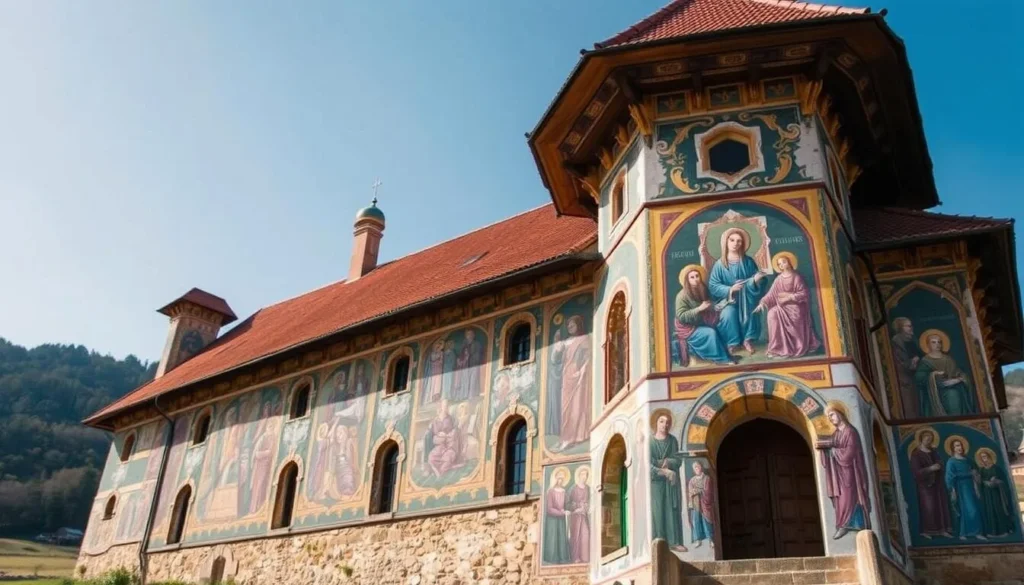
5. Painted Monasteries of Bucovina
In northeastern Romania, the Painted Monasteries of Bucovina represent masterpieces of Byzantine art. These UNESCO-listed churches feature extraordinary exterior frescoes painted in the 15th and 16th centuries. The most famous monasteries include Voroneț (known for its distinctive blue), Sucevița, Moldovița, and Humor. The vivid colors and intricate biblical scenes have remarkably survived the elements for centuries, earning Voroneț the nickname “Sistine Chapel of the East.”
6. Transfăgărășan Highway
Often called “the best road in the world,” this spectacular mountain pass cuts through the Carpathian Mountains. Built as a strategic military route in the 1970s, the Transfăgărășan features hairpin turns, long S-curves, and dramatic descents. The road reaches altitudes over 2,000 meters and offers breathtaking views of alpine landscapes. At the highest point, stop at Bâlea Lake, a glacier lake surrounded by mountains. Note that the road is typically open only from July to October due to snow conditions.
Ready for a Romanian Road Trip?
Rent a car to explore Romania’s stunning landscapes at your own pace:
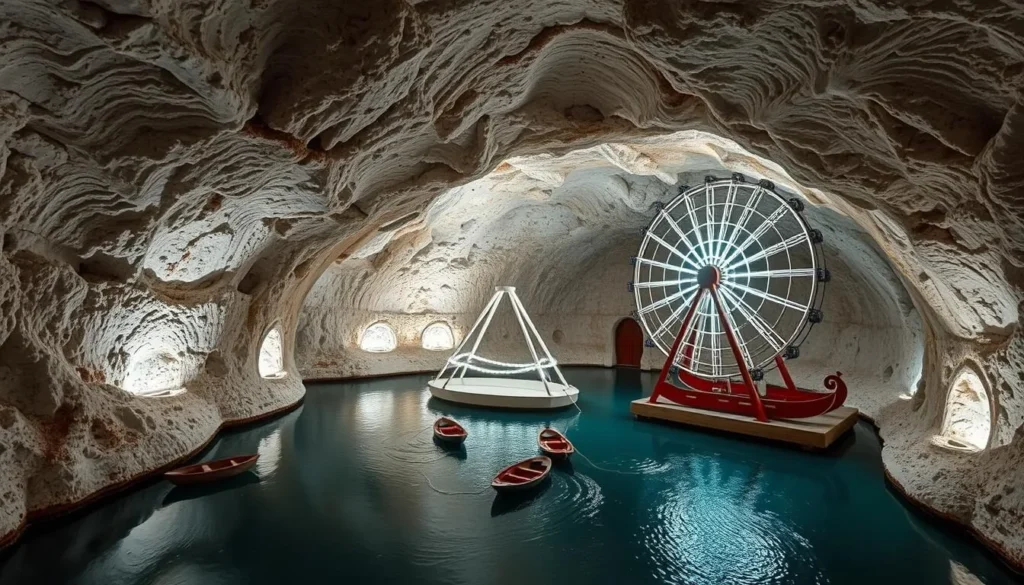
7. Turda Salt Mine
For a truly unique experience, visit the Turda Salt Mine in Transylvania. This former salt mine has been transformed into an underground theme park and wellness center. Descend into the earth to discover enormous caverns with a Ferris wheel, boat rides on an underground lake, mini-golf, and even an amphitheater. The constant temperature (10-12°C) and salt-infused air are said to have therapeutic benefits for respiratory conditions.
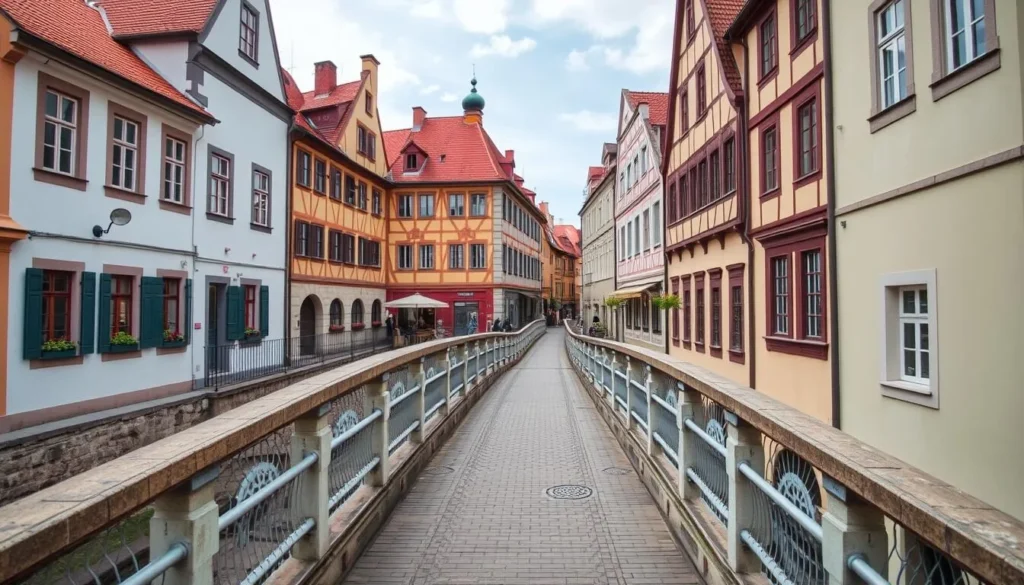
8. Sibiu
One of Transylvania’s most charming cities, Sibiu was a European Capital of Culture in 2007. The well-preserved medieval center features two main squares connected by the Bridge of Lies, colorful burgher houses with distinctive “eye” windows in their roofs, and impressive Gothic churches. The ASTRA open-air museum on the city’s outskirts showcases traditional Romanian village life with historic buildings from across the country. Sibiu hosts an internationally renowned theater festival each summer.
Unique Romanian Experiences
Beyond the major attractions, Romania offers several unique experiences that shouldn’t be missed:
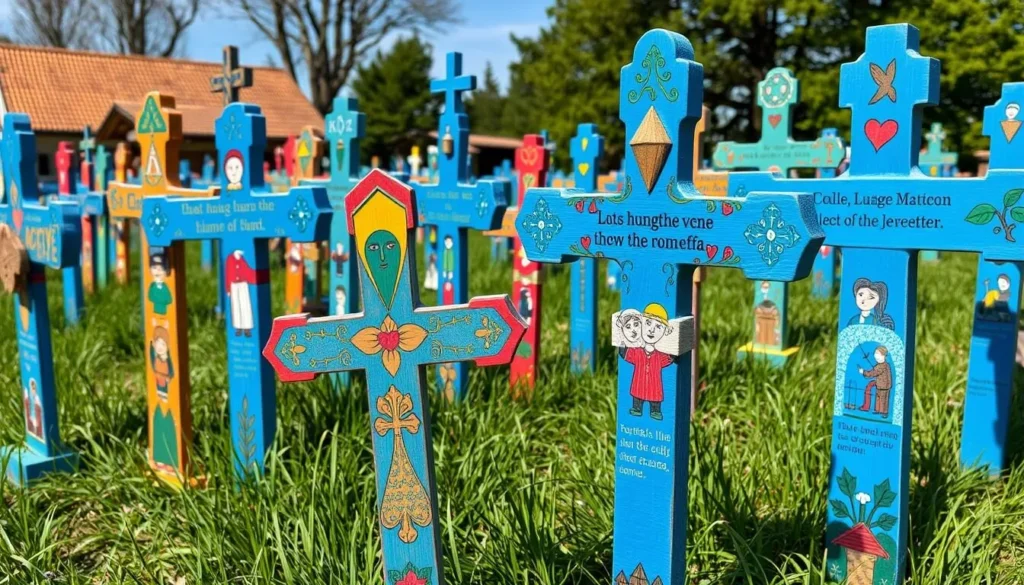
1. The Merry Cemetery
In the village of Săpânța in Maramureș, the Merry Cemetery takes a unique approach to commemorating the dead. Brightly colored crosses feature naive paintings depicting the deceased’s life, profession, or sometimes the manner of death, accompanied by humorous poems. This celebration of life through art and humor reflects the Dacian belief that death is a joyous transition to a better life.
2. Traditional Villages of Maramureș
Step back in time in the wooden villages of Maramureș, where centuries-old traditions remain alive. Admire the impressive wooden churches with their tall spires, the ornately carved wooden gates protecting family homes, and the traditional costumes still worn for special occasions. Villages like Breb, Botiza, and Ieud offer authentic glimpses into rural Romanian life.
3. Transylvanian Saxon Villages
Explore the fortified churches and well-preserved medieval villages built by German settlers in Transylvania. UNESCO-listed villages like Viscri (where King Charles III owns a property), Biertan, and Prejmer showcase unique defensive architecture and traditional Saxon culture. Many villages now offer guesthouses in renovated historic buildings.
Discover Romania’s Hidden Gems
Book authentic cultural experiences and guided tours:
4. Bucharest’s Contrasts
Romania’s capital offers fascinating contrasts between its elegant pre-war architecture (once earning it the nickname “Little Paris”), massive communist-era buildings (including the enormous Palace of Parliament), and vibrant contemporary scene. Explore the historic center, visit the excellent Village Museum, and experience the city’s energetic nightlife and cafe culture.
5. Romanian Cuisine
Sample traditional Romanian dishes like sarmale (cabbage rolls stuffed with meat and rice), mămăligă (polenta, often served with cheese and sour cream), mici (grilled meat rolls), and papanași (cheese doughnuts with jam and cream). Pair your meal with local wines from regions like Dealu Mare or Recaș, or try țuică, the potent plum brandy offered as a traditional welcome drink.
Outdoor Adventures in Romania

Hiking in the Carpathians
The Carpathian Mountains offer excellent hiking opportunities, from gentle day hikes to challenging multi-day treks. Popular areas include Piatra Craiului National Park, Retezat National Park, and Făgăraș Mountains. The well-marked trails lead to alpine meadows, glacial lakes, and peaks offering spectacular views. Romania has one of Europe’s largest populations of brown bears, wolves, and lynx, though encounters are rare.
Wildlife Watching
Romania offers some of Europe’s best opportunities to observe large carnivores in their natural habitat. Join guided bear-watching excursions from hides near Brașov or Tusnad. The Danube Delta provides world-class birdwatching, with species including white pelicans, herons, and rare white-tailed eagles.
Winter Sports
Romania’s mountain resorts offer affordable skiing and snowboarding from December through March. Poiana Brașov is the largest and most developed resort, while Sinaia, Predeal, and Azuga also offer good facilities. Equipment rental is widely available, and ski schools offer instruction in multiple languages.
Plan Your Romanian Adventure
Find the perfect accommodations for your outdoor adventures:
Practical Tips for Visiting Romania
Currency
Romania’s currency is the Romanian Leu (RON). While major hotels and restaurants in tourist areas accept credit cards, smaller establishments and rural areas often require cash. ATMs are widely available in cities and towns. It’s advisable to carry some cash, especially when traveling to remote areas.
Language
Romanian is the official language, a Latin-based language related to Italian and French. English is widely spoken in tourist areas, hotels, and by younger Romanians, especially in cities. Learning a few basic Romanian phrases is appreciated by locals. German is sometimes spoken in Transylvanian Saxon regions, and Hungarian in parts of Transylvania.
Safety
Romania is generally a safe country for travelers. Exercise normal precautions regarding personal belongings, especially in crowded tourist areas. The most common issues are petty theft and taxi scams in larger cities. Rural roads may be in poor condition, and watch for horse-drawn carts when driving, especially at dusk.
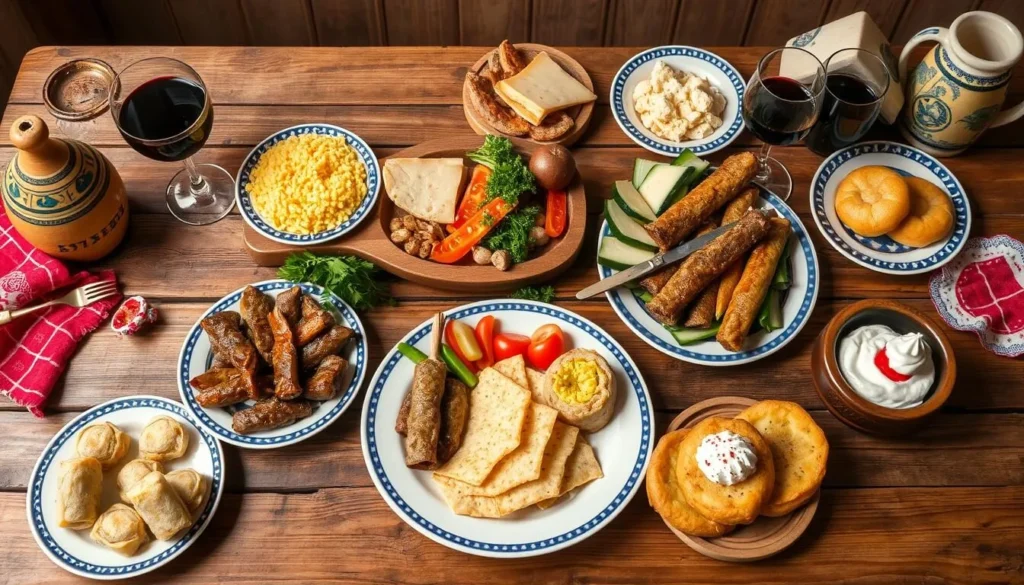
Dining Tips
Romanian meals tend to be hearty and meat-focused, though vegetarian options are increasingly available in cities. Lunch is traditionally the main meal of the day. Tipping 10% is customary in restaurants if service charge isn’t included. Reservations are recommended for popular restaurants, especially in tourist areas during summer.
Connectivity
Romania has excellent internet connectivity, with some of the fastest speeds in Europe. Free Wi-Fi is common in accommodations, restaurants, and public spaces in cities. Mobile coverage is good throughout most of the country, though there may be gaps in remote mountain areas. Local SIM cards are inexpensive and easily available with ID.
Where to Stay in Romania
Romania offers a wide range of accommodation options to suit all budgets and preferences:
City Hotels
Major cities like Bucharest, Cluj-Napoca, and Brașov offer everything from international luxury chains to boutique hotels in historic buildings. Mid-range and budget options are plentiful and often provide excellent value compared to Western European prices.
Rural Guesthouses
For an authentic experience, stay in a pensiune (guesthouse) in rural areas and small towns. Many offer home-cooked meals featuring local produce and traditional recipes. In regions like Maramureș and Bucovina, some guesthouses are in traditional wooden houses with modern amenities.
Historic Properties
Several historic buildings have been converted into unique accommodations, including renovated Saxon houses in Transylvanian villages, former aristocratic mansions, and even sections of castles. These properties combine historic charm with modern comforts.
Find Your Perfect Romanian Stay
Browse a wide selection of accommodations across Romania:
Suggested Romania Itineraries
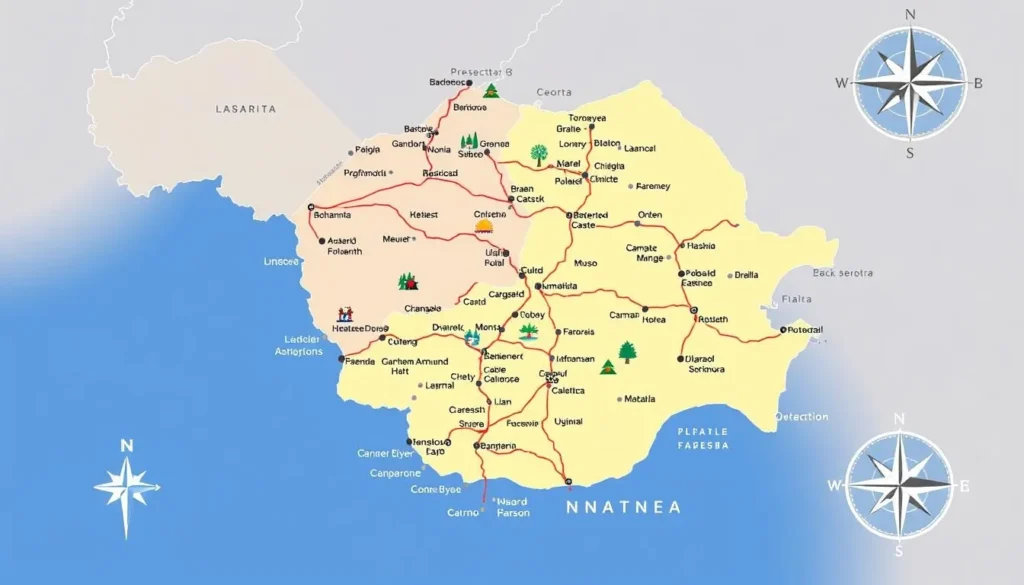
Classic Romania (7-10 days)
Bucharest (2 days) → Sinaia (Peleș Castle) → Brașov (2 days, including Bran Castle) → Sighișoara (1 day) → Sibiu (2 days) → return to Bucharest
Nature and Wildlife (10-14 days)
Bucharest → Brașov (including bear watching) → Transfăgărășan Highway → hiking in Făgăraș Mountains → Danube Delta (3 days) → Black Sea coast (2 days) → return to Bucharest
Cultural Immersion (10-14 days)
Bucharest → Sibiu → traditional villages of Maramureș (3 days) → Painted Monasteries of Bucovina (2 days) → Iași → return to Bucharest
Create Your Perfect Romanian Journey
Book guided tours and activities to complete your itinerary:
Experience the Magic of Romania
Romania offers a rare combination of pristine natural landscapes, well-preserved medieval architecture, and living folk traditions that have disappeared from much of Europe. From the mist-shrouded castles of Transylvania to the bird-filled wetlands of the Danube Delta, from vibrant cities to timeless villages, Romania rewards travelers with authentic experiences and warm hospitality. Now is the perfect time to discover this captivating country before the secret gets out!
Ready to Discover Romania?
Start planning your Romanian adventure today:
